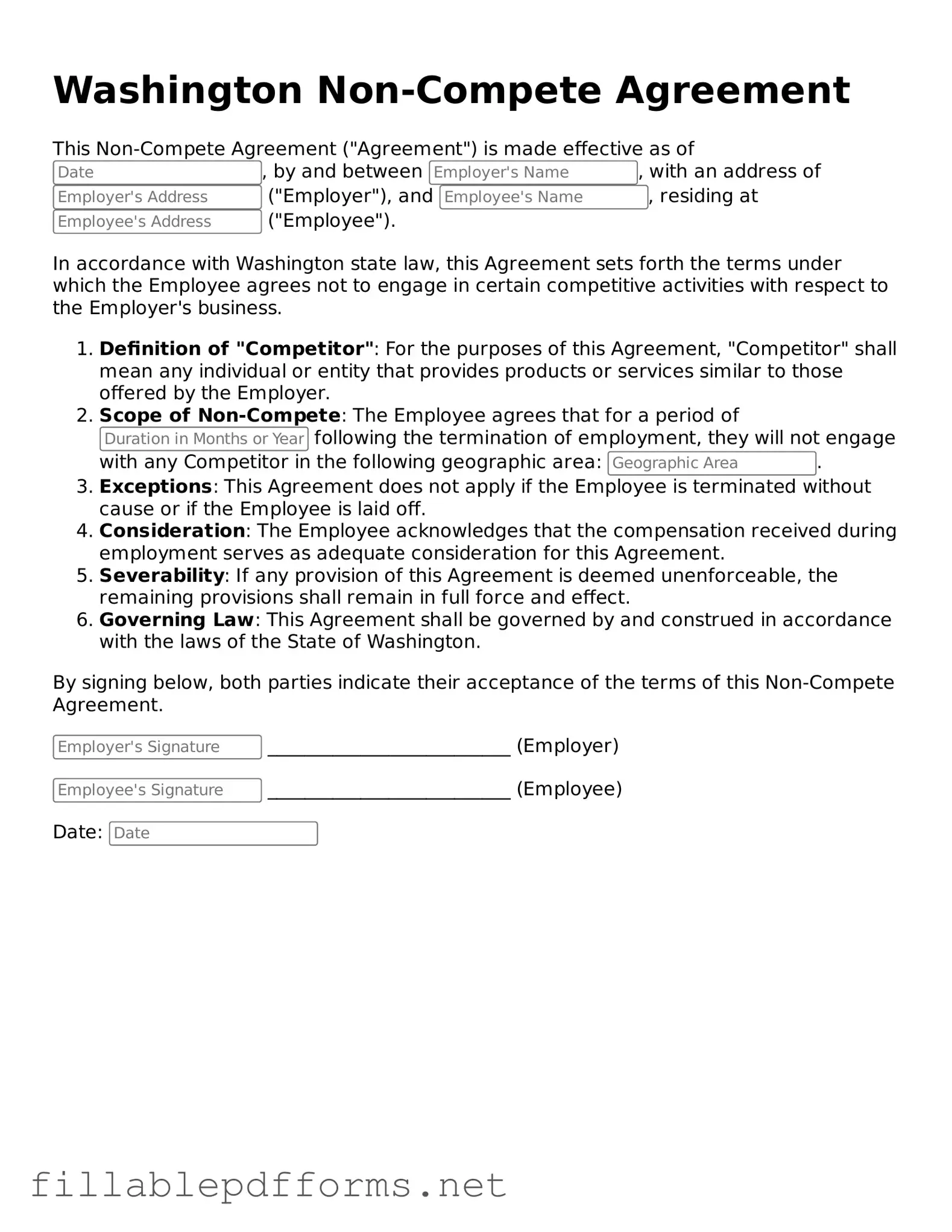Attorney-Verified Non-compete Agreement Form for Washington State
A Washington Non-compete Agreement is a legal document that restricts an employee's ability to work for competitors after leaving a job. This form aims to protect a company's proprietary information and trade secrets while balancing the rights of the employee. Understanding the nuances of this agreement is essential for both employers and employees navigating the job market in Washington.
Launch Editor Here
